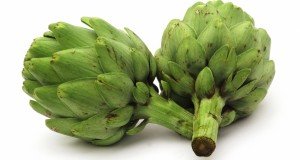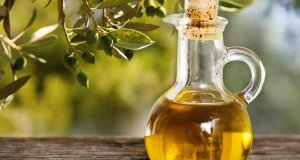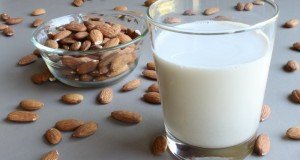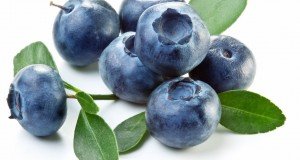Alarming levels of heavy metals found in nearly HALF of all fruit juices tested
(NaturalHealth365) For many, cadmium, arsenic and lead might bring to mind the contents of test tubes brandished by mad scientists and comic-book villains – not the contents of a child’s sippy cup. However, researchers at Consumer Reports say they recently detected potentially harmful quantities of these toxic heavy metals in a variety of popular fruit juices.
Appallingly, almost half of the juices tested contained enough of the heavy metals to potentially harm children – even when given in amounts as low as 4 ounces a day!
Despite growing public awareness of its high sugar content, fruit juice remains a popular beverage for children and adults. In one study, a whopping 80 percent of parents of children three years and younger acknowledged giving children fruit juice at least “sometimes” – and three quarters of the children who drank fruit juice did so at least once a day.
Let’s take a closer look at what you need to know.
Do NOT drink this: Tests reveal troubling levels of heavy metals
To conduct the research, scientists at Consumer Reports – a non-profit organization dedicated to empowering and educating consumers – tested 45 varieties of fruit juices currently sold nationwide.
The varieties included apple, pear, grape and “fruit blends.” 24 national, store and private-label brands were evaluated, among them Apple and Eve, Capri Sun, Dollar General, Juicy Juice, Mott’s, Whole Foods, Minute Maid, Ocean Spray, Rite Aid, Trader Joe’s and Welch’s.
21 of the juices – including some marketed specifically for children – were found to contain “concerning” levels of cadmium, lead and inorganic arsenic, with grape juice and juice blends displaying the highest average levels.
Consumer Reports’ chief science officer James Dickerson, PhD, noted that in some cases a mere half-cup of juice could contain enough heavy metals to warrant concern.
“Concerning” levels were defined as amounts that were elevated to the point where consuming the juices regularly could raise the risk of certain cancers, behavioral issues and other health problems.
Seven of the tested juices contained levels of heavy metals that could potentially harm children who drank as little as 4 ounces per day – and nine of them posed risks at a cup a day.
Researchers found measurable levels of at least one heavy metal in every juice tested. In other words, no juices were found to be completely free of contamination.
Important note: the team reported one small “silver lining” – none of the juices contained worrisome levels of mercury.
And the “high-ringers” are….
Despite its healthy-sounding name, Welch’s 100% Juice with Antioxidant Superberry was a potential risk to both children and adults at 4 ounces a day – as were Welch’s White and Concord Grape varieties.
But other brands posed risks as well.
Walmart’s Great Value 100% Cranberry Grape and Whole Food’s 100% Organic Grape Juice also made the list of “potential risk” juices for their overall heavy metal content.
And Trader Joe’s Fresh Pressed Apple Juice exceeded the FDA’s proposed parts-per-billion limit for arsenic.
Consumer Reports identified juices with lower levels of heavy metals as “Better Alternatives.”
These include Apple and Eve 100% Apple Juice, Rite Aid’s Big Win brand apple juice and Dollar General’s Clover Valley 100% Apple Juice.
Mott’s and Gerber’s 100% apple juices made it onto the “Better Alternative” list as well, along with Ocean Spray Cran-Apple and Goya Pear Nectar.
Although many companies did not respond to Consumer Reports’ request for comment, the publication notes that a Welch’s spokesperson defended all their juices as “safe,” and said they complied with all legal requirements. The representative also pointed out that low levels of heavy metals are already found naturally in fruits and vegetables (more about that in the next section).
To use Consumer Reports’ interactive chart, roll over the images – at the bottom of this page – to access information on possible risks.
Well-documented heavy metal dangers include heightened risk of behavioral problems and cancer
Disturbingly, research has shown that heavy metals are common in numerous foods and beverages, including such presumably wholesome fare as rice, fish, sweet potatoes and infant formula.
And, heavy metals are also naturally present in air, water and soil.
While the amounts of heavy metals in the environment and in foods are admittedly low, natural health experts maintain that these poisons can accumulate in the body over time, triggering inflammation and chronic disease.
In other words, the fact that these toxins are already in the environment gives us more reason – not less – to limit our exposure.
Extensive studies have shown that heavy metal exposure is associated with lowered IQ. Exposure can also raise the risk of behavioral problems (particularly ADHD), type 2 diabetes, reproductive problems, heart disease, kidney damage and cancer.
In addition, toxic heavy metals are implicated in chronic fatigue syndrome, anemia, autoimmune disorders and Alzheimer’s disease – along with a host of other health problems.
Unfortunately, children – with still-developing nervous systems and smaller body proportions – are more vulnerable than adults to the harmful effects of toxins.
Dr. Jennifer Lowry, M.D., head of the Council on Environmental Health at the American Academy of Pediatrics, reports that exposure to heavy metals can affect a child’s “whole life trajectory.”
Action step: Seek out healthier alternatives to commercial fruit juices
In recent years, dietitians and nutritionists have begun recommending cutting down on – or eliminating – fruit juice consumption. While fruits juices do contain beneficial micronutrients (such as vitamin C) they are notoriously low in dietary fiber and high in fructose – a natural sugar that can contribute to tooth decay and obesity.
And, their heavy metal content provides yet another good reason to limit consumption.
Natural health experts advise avoiding processed commercial juices completely, or – at the very least – diluting juices with purified (clean) water and offering them in smaller servings.
Better yet, you can squeeze your own fresh juices from organic fruits, berries and vegetables – or switch to drinking spring water with a few drops of lemon or orange.
According to the American Academy of Pediatrics, children under a year old should not be given fruit juice at all.
One-to-three-year olds should not consume over 4 ounces a day, 4-to-6-year-olds should be limited to 6 ounces, and children over 7 should be limited to 8 ounces a day. Bottom line: nobody should make fruit juice a ‘big’ part of their diet.
Healing foods and supplements that can help the body detoxify heavy metals include chlorella, vitamin C, cilantro, milk thistle, bone broth, chia seeds and the mineral selenium.
But check first with your integrative doctor before supplementing – or before giving any supplements to children.
Health tip: eating sulfur-rich garlic and onions, along with cruciferous vegetables such as Brussels sprouts, broccoli and kale helps to replenish glutathione, the body’s premier antioxidant and neutralizer of toxins.
In response to a recent letter from Consumer Reports detailing their findings and asking for safe limits on heavy metals, the FDA said it “welcomed” the data provided, and said it planned to review it as part of a ‘larger, comprehensive effort to reduce toxic element exposure. “ (We won’t hold our breath….)
In the meantime, it would probably be wise to start minimizing your family’s exposure to processed fruit juices – starting today.
Sources for this article include:











